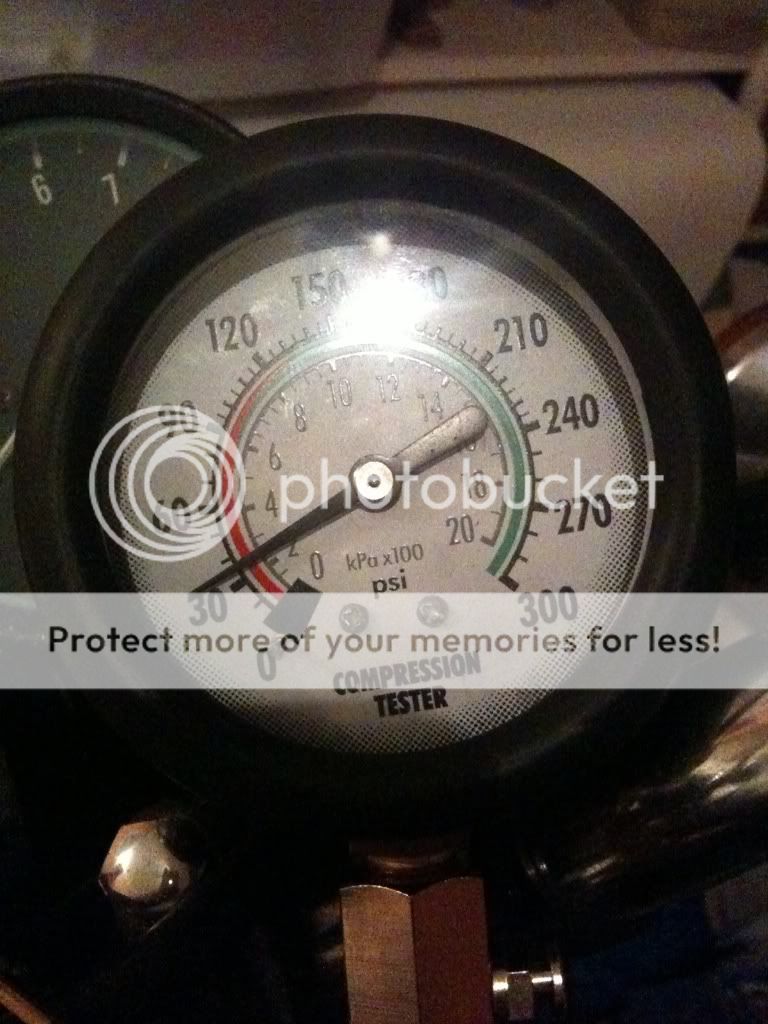sham
Been Around the Block
Hey guys, rather confused so there are a couple questions here I think...
Background is a Kawasaki Z250, bought non starting and still non starting. I have rebuilt the carb (CV32, but have not removed/changed the float valve seat - not sure how, that's another question) and then realised I really should check the compression of the engine...the tester set arrived today and I tried to test for compression by removing the spark plug, opening the throttle and hitting the starter button.
Usually, I do get sparks from the spark plug, but for the compression test, I got a 0 reading. Nothing moved at all.
So first question relating to this thread is, are there any reasons why this might be? I checked the starter relay and it is good. I didn't have time to check the starter motor, but I'm under the impression that seeing as I am usually getting sparks from the spark plug, this is not the issue. Am I correct?
Secondly, this is the second time that I have been getting sparks from key hole, which heats up my key and produces a burnt smell. Dumb question, but is there a problem with my electronics? I have not noticed this before. With this key hole sparking issue, I have also noticed that my signals are not working anymore. My battery is reading at 12.52V when plugged into the bike, and I have been trying to give it a bit of a charger every month or so.
I guess thirdly, I am wondering what else should I be looking into to get the bike started? The reason I rebuilt the carb was that I wasn't getting any fuel through them when I tried starting the bike. Now that I have rebuilt and rejetted for pods (have not put in a new diaphragm or been able to remove the float valve seat as mentioned above), I am thinking that may be due to either of those reasons.
Any advice would be greatly appreciated.
Thanks.
Background is a Kawasaki Z250, bought non starting and still non starting. I have rebuilt the carb (CV32, but have not removed/changed the float valve seat - not sure how, that's another question) and then realised I really should check the compression of the engine...the tester set arrived today and I tried to test for compression by removing the spark plug, opening the throttle and hitting the starter button.
Usually, I do get sparks from the spark plug, but for the compression test, I got a 0 reading. Nothing moved at all.
So first question relating to this thread is, are there any reasons why this might be? I checked the starter relay and it is good. I didn't have time to check the starter motor, but I'm under the impression that seeing as I am usually getting sparks from the spark plug, this is not the issue. Am I correct?
Secondly, this is the second time that I have been getting sparks from key hole, which heats up my key and produces a burnt smell. Dumb question, but is there a problem with my electronics? I have not noticed this before. With this key hole sparking issue, I have also noticed that my signals are not working anymore. My battery is reading at 12.52V when plugged into the bike, and I have been trying to give it a bit of a charger every month or so.
I guess thirdly, I am wondering what else should I be looking into to get the bike started? The reason I rebuilt the carb was that I wasn't getting any fuel through them when I tried starting the bike. Now that I have rebuilt and rejetted for pods (have not put in a new diaphragm or been able to remove the float valve seat as mentioned above), I am thinking that may be due to either of those reasons.
Any advice would be greatly appreciated.
Thanks.







